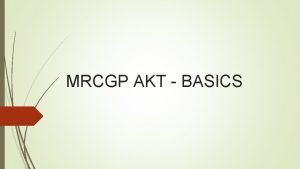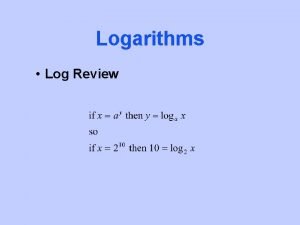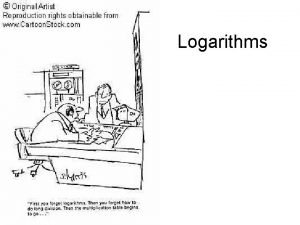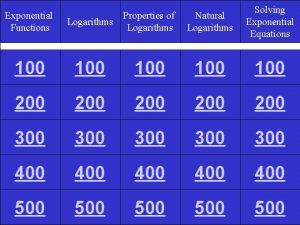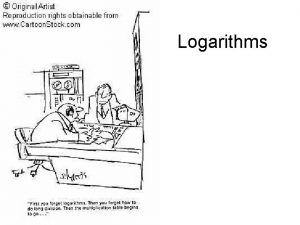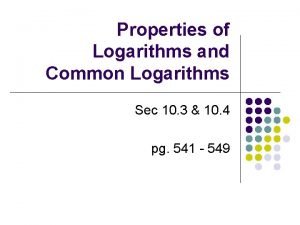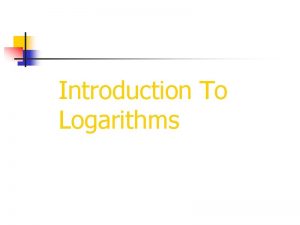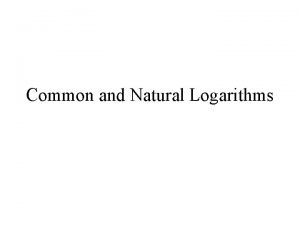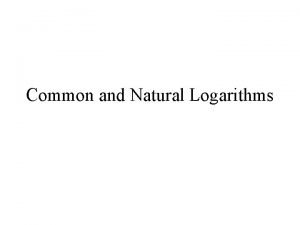Review of Logarithms Review of Logarithms On Exam











- Slides: 11

Review of Logarithms

Review of Logarithms • On Exam I: By some questions I received, I think that some of you have an appalling lack of understanding of some basic rules about how to use logarithms! • Example: Using Ω 1(E 1) = K(E 1)f 1, etc. calculate the ratio: R = [Ω 1(E 1 = 3. 15)Ω 2(E 2 = 4. 7)]/[Ω 1(E 1 = 3. 14)Ω 2(E 2 = 4. 69)] or R = (Numerator)/(Denominator) • Some of you wrote ln(R) = ln(Numerator)/ln(Denominator) which is 100% nonsensical!! • The correct expression is ln(R) = ln(Numerator) – ln(Denominator) • Also other very basic errors!!

Rules of Logarithms If M & N are positive real numbers & b ≠ 1: • Product Rule: logb. MN = logb. M + logb. N The log of a product equals the sum of the logs Examples: log 4(7 • 9) = log 47 + log 49 log (10 x) = log 10 + log x log 8(13 • 9) = log 8(13) + log 8(9) log 7(1000 x) = log 7(1000) + log 7(x)

Rules of Logarithms If M & N are positive real numbers & b ≠ 1: • Quotient Rule: logb(M/N) = logb. M - logb. N The log of a quotient equals the difference of the logs Example: log[(½)x] = log(x) + log(½) = log(x) + log(1) – log(2) But, log (1) = 0, so log[(½)x] = log(x) - log(2)

Rules of Logarithms If M & N are positive real numbers & b ≠ 1 & p is any real number: • Power Rule: logb. Mp = p logb. M The log of a number with an exponent equals the product of the exponent & the log of that number Examples: log x 2 = 2 log x ln 74 = 4 ln 7 log 359 = 9 log 35

Change of Base Formula • Most often we use either base 10 or base e • Most calculators have the ability to do either. • How can we use a calculator to compute the log of a number when the base is neither 10 nor e? • Use the formula Example: log 2 (17) = ? • So, log 2 (17) = [logb(x)/logb(a)]

Basic Properties of Logarithms • Most used properties:

Using the Log Function for Solutions Example • Solve for t: • Take the log of both sides & use properties of logs

Properties of the Natural Logarithm • Recall that y = ln x x = ey • Note that – ln 1 = 0 and ln e = 1 – ln (ex) = x (for all x) – e ln x = x (for x > 0) • As with other based logarithms

Use Properties for Solving Exponential Equations • Given • Take log of both sides • Use exponent property • Solve for what was the exponent Note this is not the same as log 1. 04 – log 3

Common Errors & Misconceptions log (a+b) is NOT the same as log a + log b log (a-b) is NOT the same as log a – log b log (a*b) is NOT the same as (log a)(log b) log (a/b) is NOT the same as (log a)/(log b) log (1/a) is NOT the same as 1/(log a)
 Uncontrollable spending ap gov
Uncontrollable spending ap gov Unit 8 exponential and logarithmic functions
Unit 8 exponential and logarithmic functions Logba=x
Logba=x World history spring final exam review answers
World history spring final exam review answers Exam review template
Exam review template Spanish 1 final review
Spanish 1 final review Spanish final exam review packet answer key
Spanish final exam review packet answer key Pltw human body systems final exam
Pltw human body systems final exam Poe final review
Poe final review Mrcgp online questions
Mrcgp online questions Ied final exam review
Ied final exam review Hbs final exam practice test
Hbs final exam practice test









